This post continues on the first post about outline deformations and presents a simple way for generating outlines as XY data. XY format is very convenient for representing outline and line art in R or python. This type of visualization can be produced using GIMP and imageJ through a sequence of easy steps. GIMP enables easy extraction of the central object from the image background. First step in outline extraction should be the precise definition of the object boundaries, such that the contrast between the object and the background is maximal. Example picture for this post is available here. After opening the picture in GIMP workspace it looks like in Figure 1.
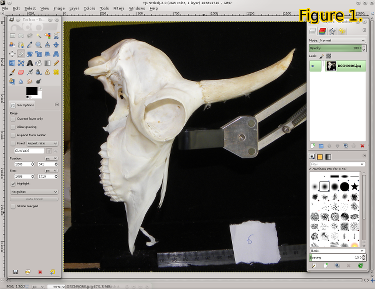
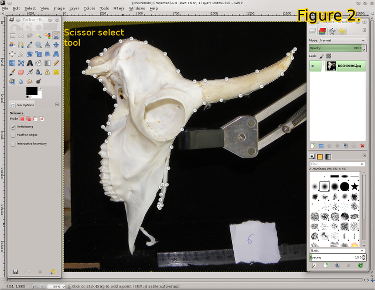
The easiest way to separate this chamois cranium from its background is to use Scissor Select Tool from the GIMP toolbox. This tool can nicely track the path between sucessive control points that should be placed along the desired object (Figure 2). When control points are placed along the shape, selection can be completed by pressing enter, and the background can be deleted by inverting selection pressing Ctrl+I. and deleting it using the delete key (Figure 3). Selection should be inverted once more and converted to path; from the Select menu To Path. Finally, stroke path (Figure 4, path card and right click on selection, Stroke path) gives the desired outline that can be exported as .tiff for imageJ through Export in the File menu.
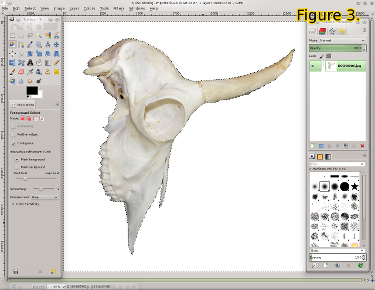
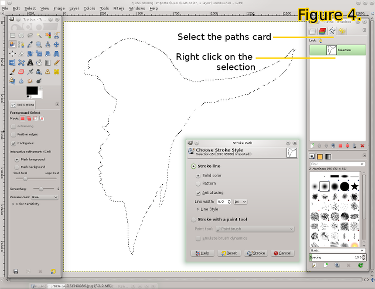
In imageJ, picture should be converted to binary in Process menu, by selecting Binary and Make Binary. Final step is saving the binary image selection as XY data. First the outline should be selected by the magic wand selection tool (Figure 5) and then the image should be saved in XY format, in File menu, Save as and select XY coordinates. The XY data is also available here.
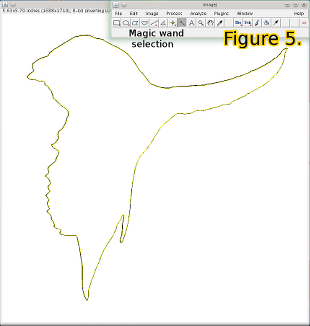
Now the .txt file could be easily imported into R and python.